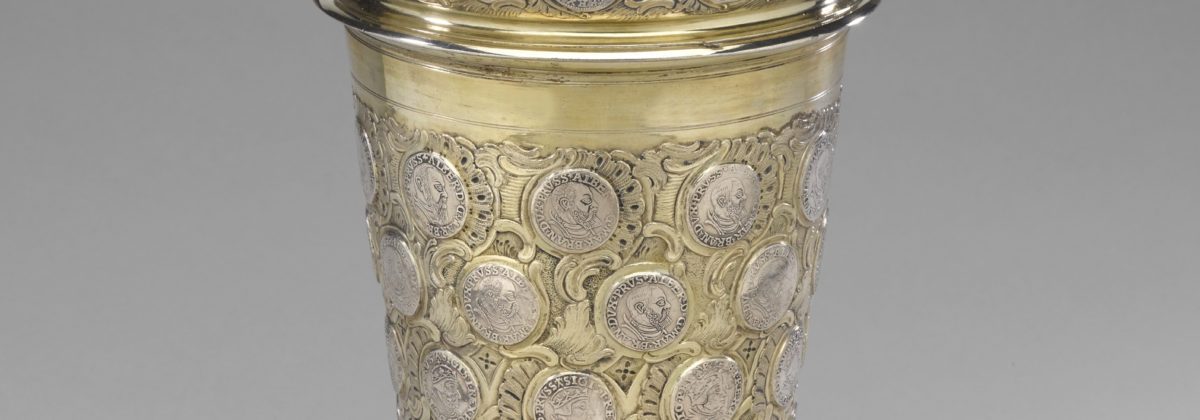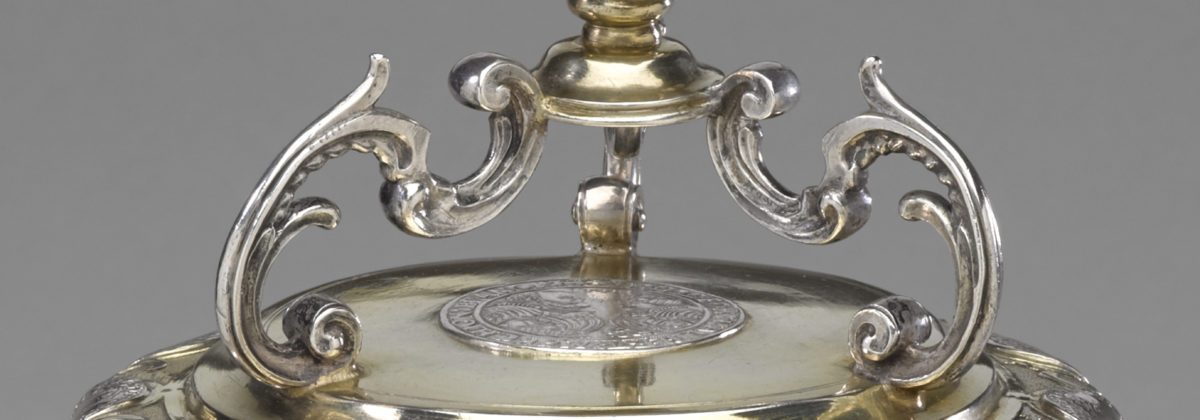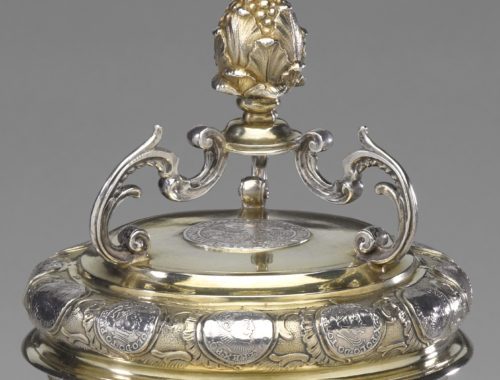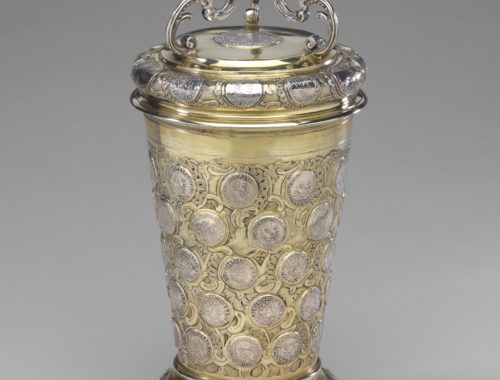Object Number: #236
Marks: Berlin ca. 1750
Maker: Christoph Friedrich Oelrichs
City’s hallmark: a bear in an oval shield for Berlin, first half of eighteenth century (Rosenberg 1922, nr. 1149)
Maker’s mark: “OELRICHS” in an oblong shield for Christoph Friedrich Oelrichs (Scheffler 1968, nr. 156)
Re-punching: “E” for Cracow, 1806
Height with lid: 32,5 cm (12,5 in.); Weight: 1.450 gr.
Lit./fig .: Kriegseisen, Jacek, ‘A traveling set of cutlery made by Johann Bartolomowicz – a goldsmith from Lidzbark Warmiński’, p. 93-104 In: Kwartalnik Historia Kultury Materialnej, year LXIII (63rd), no. 1, Warsaw 2015, fig. 12, p. 101.
Detailed Information
Silver Parcel Gilt, Large Prussian Coin Beaker with Lid
The present silver-gilt beaker has balanced proportions, a lovely condition of the smooth areas and the edges of the base, a nicely profiled rim of the lip, smooth steeply drawn-in throat beneath the cantilevered lid moulding and a smooth middle region of the lid over a delicate grooving. It is raised on a round, vaulted and profiled foot, which is gilt and adorned with silver coins. A smooth, concave ring connects it to the body of the beaker. On the sides of the beaker as well as on the beading of the base and lid, there have been embedded a total of 72 groats (penny coins) of Brandenburg-Prussia and Poland, mostly from the second quarter of the sixteenth century. A dense network of embossed and chiselled rocailles on a chased surface surrounds them. Above the coin on the lid, three cast and chiselled double C-shaped clasps – created as in the form of a canopy – support a large cast fruit cone, unsheathed in sepals. At the base and in the middle of the lid a thaler dating from 1540 and 1541, stemming from the time of George of Bradenburg-Ansbach, Margrave of Brandenburg-Ansbach from the House of Hohenzollern (1484-1543) and his nephew Albert Alcibiades, Margrave of Brandenburg-Kulmbach (1522-1557) (they stroke common coins until 1545).
A timely order can be made according to historical facts; the beaker must have been created just before or just at the beginning of the Seven Years’ War (1756-1763), at a time when all money and currency reserves of Prussia were used or were extremely strained. On the rim of the foot and of the lid there is an Austrian hallmark “E” for Cracow (Cracow belonged then to the Austrian Empire), an evidence that the beaker was taxed there in 1806.
The present beaker presents a magnificent and important object of silver. Judging from its quality and design it can be assumed that it was exposed as a representation object.
With regards to its chronological arrangement, the beaker must have been produced shortly before the Seven Years’ War (1756-1763) or at the beginning of it. At that time the currency and monetary reserves of Prussia were spent or extremely reduced. There is an Austrian re-punching mark “E”, which stands for Cracow (then a part of the Austrian empire), an evidence that revels that in 1806 the beaker was there taxed.
Coin objects in German Silver
Coins for the decoration of silver objects were quite often used since the mid-seventeenth century and this kind of decoration was broadly used since the end of seventeenth century. The coin-decoration was particularly popular for drinking vessels of every kind (beakers, tankards, drinking bowls). The goldsmiths from Brandenburg-Prussia and particularly from Berlin and Konigsberg showed a particular inclination to this decoration.
Maker
Christoph Friedrich Oelrichs was born ca. 1720. He was a warden in 1750. In 1771, he leaded the cash register and between 1773-1786, he was appraiser of the silver and gold. He died on the 10th May 1786.





